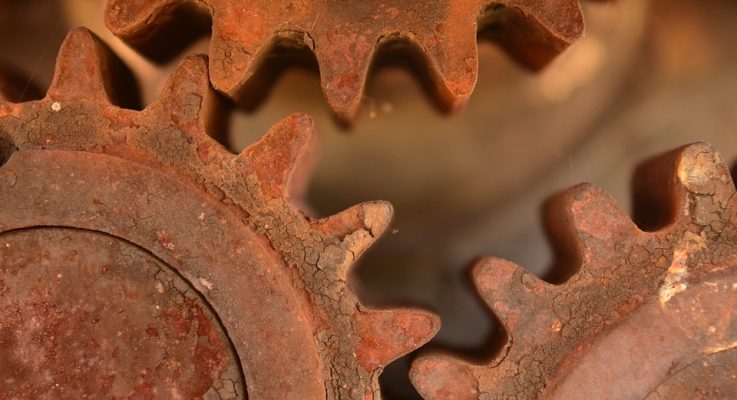How Would you Handle Corrosion in your Steel Mill?
By: Erik Kane | On: April 25, 2019

Addressing New Issues
Steel mill operators don’t like to have downtime problems, in fact they can’t afford to. They want to run as much as possible, and as efficiently as possible. Production equals dollars. As problems pop up that cause unplanned downtime or upset production (and subsequently get addressed) over the years, they’ve driven the industry to continue to change and evolve as a whole. So the mills of today don’t have the same issues that mills did in the past. You can’t as easily say “Hey, we saw this exact same problem up the street on their furnace!” the way you may have been able to 50 years ago.
That doesn’t mean that mills still don’t run into issues, they just tend to be a bit more personalized. And when you have a unique issue, you tend to get a unique solution. A mill will do its best to solve its own problems, yet each mill has their own idiosyncrasies. When these “little” problems pop up, the mill has to find a way to deal with it. When it comes to problem solving in mills, there are two main schools of thought: get to the real core of the problem and fix it as completely as possible for a lasting solution, or stabilize the issue and control it through regular coordinated maintenance. Both strategies have the same end goal: avoid as much unplanned downtime as possible by solving the problem. But which strategy is correct?
2 Schools of Thought

We see this all the time with hoses and expansion joints. To illustrate this issue, let’s use two real-life examples: Mill A and Mill B were both using Hose Master’s Annuflex hose assemblies to transfer cooling water on the caster and experiencing similar hose failures due to corrosion from an unknown source. Both Mills had seen unplanned downtime due to the failure of these hoses, but each had a different philosophy on how to solve to the problem.
“Mill A” takes the long-term calculated approach. They analyze it, looking at everything regarding the application to isolate the underlying issue. Surrounding piping, surrounding equipment, the hose construction, the media inside the hose…and discover that the mold powder being used during the casting is mixing with cooling water spray, and floating down onto the outside of the hoses, causing them to corrode. In the short term, they made piping adjustments and redesigned their Annuflex hose assemblies to be made out of ChemKing which uses a nobler alloy (Hastelloy C276) to resist the corrosion, and add an external guard to help prevent particulate from coming into contact with the hose in the first place. They then plan to install a metal shield around the casting segment where the mold powder is originating to prevent it from escaping and damaging the surrounding equipment in the future. This solution is more time consuming and more expensive, but the issue is solved for good and removes the need for regular maintenance!
“Mill B” sees the same problem for what it is at face value: just a hose failure. Because the hoses have been allowed to stay in service for an extended period of time, they seek to remedy the maintenance issue of hoses failing unexpectedly. Because the mill has a planned maintenance outage every 6 months, scheduling the hoses to be replaced regularly at this time will remove the issue of unplanned failures. In order to increase the service life and guarantee performance in-between the planned maintenance outages, they make the lateral switch from Annuflex to Masterflex. The added flexibility ensures that all the assemblies they use on the caster will be flexible enough regardless of the slight differences in piping configuration, and that the hoses will not fail due to fatigue. The standard alloy construction can withstand the corrosion long enough to survive between outages, so by replacing them all at once they now have taken control of the service life issue. Because of the more economical construction, they can easily afford to replace the hoses at their planned intervals and avoid any further lost production!
 So who’s right?
So who’s right?
Well…they both are! Both mills found a way to keep their production up-and-running that makes sense to them! The hose issue plays a very small part in the overall production flow of the mill, and how they strategize and organize their overall approach to maximizing production and uptime takes into account a huge number of variables. When helping to solve these problems, manufacturers like Hose Master and our distributors have to take these differences into account. There’s more than one way to skin a cat; and what may work for one mill, may be an unacceptable solution in another. How do you handle your corrosion issues?
For those that do, Hose Master has continued to be a trusted partner in this industry and helped countless mills with their hose applications for decades. If you need assistance for metal hoses or expansion joints in a steel mill, contact us at insidesales@hosemaster.com or 216-481-2020 and we will be happy to assist you!
Copyright 2019, Hose Master, LLC
All Rights Reserved

